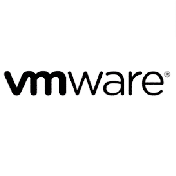Seminarinhalt
This five-day, extended hour course takes you from introductory to advanced VMware vSphere® 8 management skills. Building on the installation and configuration content from our best-selling course, you will also develop advanced skills needed to manage and maintain a highly available and scalable virtual infrastructure. Through a mix of lecture and hands-on labs, you will install, configure, and manage vSphere. You will explore the features that build a foundation for a truly scalable infrastructure and discuss when and where these features have the greatest effect. This course prepares you to administer a vSphere infrastructure for an organization of any size using vSphere 8, which includes VMware ESXi™ 8 and VMware vCenter Server® 8.
Product Alignment
• VMware ESXi 8.0
• VMware vCenter 8.0
Bitte beachten Sie beim Fast-Track die erweiterten Kurszeiten (Richtwerte): Montag bis Donnerstag: 09:00 - 18:50, Freitag 09:00 - 16:30
Hinweis: Bei kurzfristigen Buchungen, 1 Woche vor Seminarbeginn, können wir Ihren Seminarplatz leider nicht garantieren. Es kann daher zur Verzögerung bei Ihrer Anmeldebestätigung kommen.
Programm
- Introductions and course logistics
- Course objectives
vSphere and Virtualization Overview
- Explain basic virtualization concepts
- Describe how vSphere fits in the software-defined data center and the cloud infrastructure
- Recognize the user interfaces for accessing vSphere
- Explain how vSphere interacts with CPUs, memory, networks, storage, and GPUs
- Install an ESXi host
vCenter Management
- Recognize ESXi hosts communication with vCenter
- Deploy vCenter Server Appliance • Configure vCenter settings
- Use the vSphere Client to add and manage license keys
- Create and organize vCenter inventory objects
- Recognize the rules for applying vCenter permissions
- View vSphere tasks and events
- Create a vCenter backup schedule
- Recognize the importance of vCenter High Availability
- Explain how vCenter High Availability works
Configure and Manage vSphere Networking
- Configure and view standard switch configurations
- Configure and view distributed switch configurations
- Recognize the difference between standard switches and distributed switches
- Explain how to set networking policies on standard and distributed switches
Configure and Manage vSphere Storage
- Recognize vSphere storage technologies
- Identify types of vSphere datastores
- Describe Fibre Channel components and addressing
- Describe iSCSI components and addressing
- Configure iSCSI storage on ESXi
- Create and manage VMFS datastores
- Configure and manage NFS datastores
- Discuss vSphere support for NVMe and iSER technologies
Deploying Virtual Machines
- Create and provision VMs
- Explain the importance of VMware Tools
- Identify the files that make up a VM
- Recognize the components of a VM
- Navigate the vSphere Client and examine VM settings and options
- Modify VMs by dynamically increasing resources
- Create VM templates and deploy VMs from them
- Clone VMs • Create customization specifications for guest operating systems
- Create local, published, and subscribed content libraries
- Deploy VMs from content libraries
- Manage multiple versions of VM templates in content libraries
Managing Virtual Machines
- Recognize the types of VM migrations that you can perform within a vCenter instance and across vCenter instances
- Migrate VMs using vSphere vMotion
- Describe the role of Enhanced vMotion Compatibility in migrations
- Migrate VMs using vSphere Storage vMotion
- Take a snapshot of a VM
- Manage, consolidate, and delete snapshots
- Describe CPU and memory concepts in relation to a virtualized environment
- Describe how VMs compete for resources • Define CPU and memory shares, reservations, and limits
- Recognize the role of a VMware Tools Repository
- Configure a VMware Tools Repository
- Recognize the backup and restore solution for VMs
vSphere Cluster Management
- Use Cluster Quickstart to enable vSphere cluster services and configure the cluster
- View information about a vSphere cluster
- Explain how vSphere DRS determines VM placement on hosts in the cluster
- Recognize use cases for vSphere DRS settings
- Monitor a vSphere DRS cluster • Describe how vSphere HA responds to different types of failures
- Identify options for configuring network redundancy in a vSphere HA cluster
- Recognize the use cases for various vSphere HA settings
- Configure a cluster enabled for vSphere DRS and vSphere HA
- Recognize when to use vSphere Fault Tolerance
- Describe the function of the vCLS
- Recognize operations that might disrupt the healthy functioning of vCLS VMs
Managing the vSphere Lifecycle
- Generate vCenter interoperability reports
- Recognize features of vSphere Lifecycle Manager
- Describe ESXi images and image depots
- Enable vSphere Lifecycle Manager in a vSphere cluster
- Validate ESXi host compliance against a cluster image and remediate ESXi hosts using vSphere Lifecycle Manager
- Describe vSphere Lifecycle Manager automatic recommendations
- Use vSphere Lifecycle Manager to upgrade VMware Tools and VM hardware
Network Operations
- Configure and manage vSphere distributed switches
- Describe how VMware vSphere Network I/O Control enhances performance
- Define vSphere Distributed Services Engine
- Describe the use cases and benefits of vSphere Distributed Services Engine
Storage Operations • Describe the architecture and requirements of vSAN configuration
- Describe storage policy-based management
- Recognize components in the vSphere Virtual Volumes architecture
- Configure Storage I/O Control
ESXi Operations
- Use host profiles to manage ESXi configuration compliance
- Recognize the benefits of using configuration profiles
vSphere Monitoring
- Monitor the key factors that can affect a virtual machine's performance
- Describe the factors that influence vCenter performance
- Use vCenter tools to monitor resource use • Create custom alarms in vCenter
- Describe the benefits and capabilities of VMware Skyline
- Recognize uses for Skyline Advisor Pro
Zielgruppen
- System administrators
- System engineers
Vorkenntnisse
- System administration experience on Microsoft Windows or Linux operating systems



